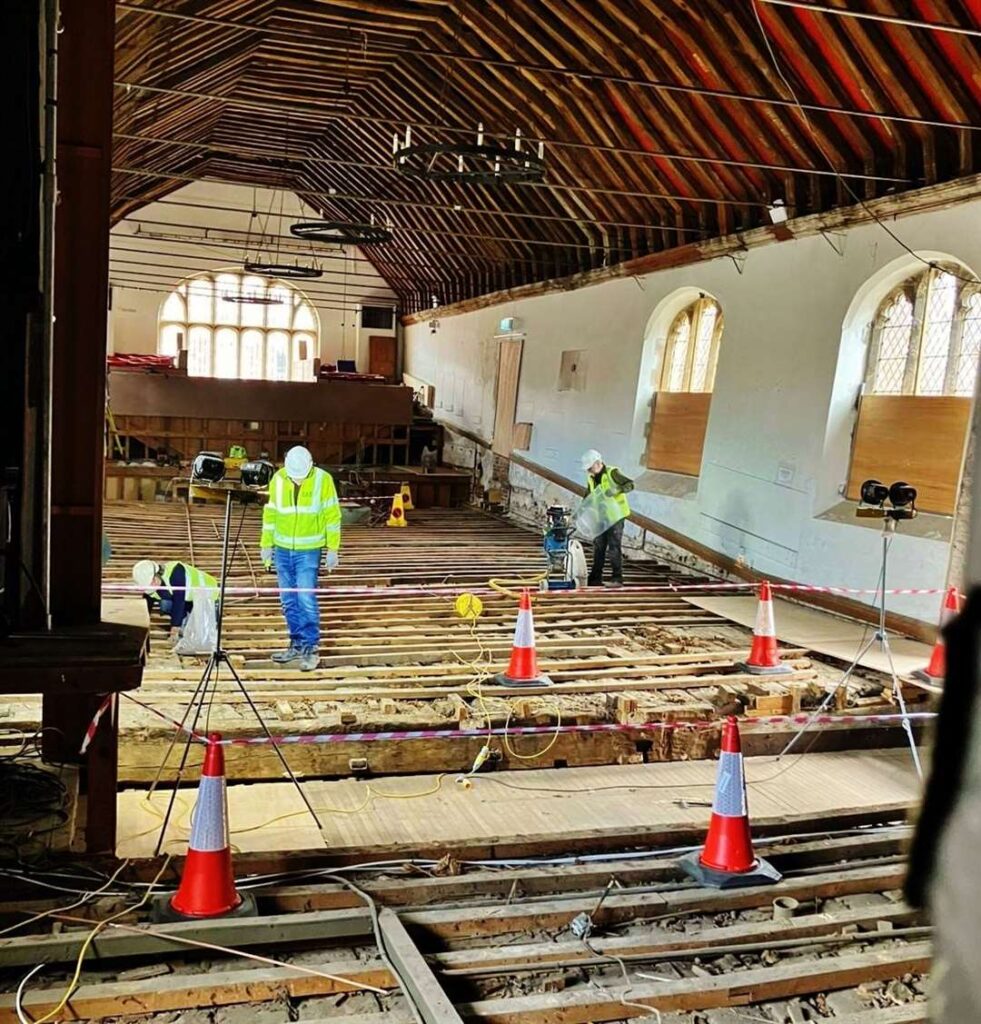The timescale for people to take a look at discoveries which potentially link a historic building with William Shakespeare has been extended after unprecedented visitor numbers.
More than 4,000 have been through the doors of Lynn’s St George’s Guildhall to look at the stage and recently uncovered floor boards which it is believed may have been trodden on by The Bard.
The UK’s oldest surviving theatrical stage and largest 15th century timber floor has been open to the public since May 26 following the landmark discovery and was due to close tomorrow, Thursday, before being covered over to allow major restoration work to continue.
However, viewing has been extended by a month until August 30 due to record visitors to the King Street complex.
Tim FitzHigham, creative director at the Guildhall, said: “We have been really excited by the number of people who have taken the opportunity to come and see the remarkable floor at the Guildhall. We have not had visitor numbers like this before.
“June was the most popular month for heritage visitors we’ve had at the Guildhall. We saw even more people just coming to see the floor in June 2025 than we did in June 2022 and 2023 for all activities combined: galleries, box office shows and films so the impact has been staggering. July has not been any different with us again seeing record numbers.”
“We so want people to have this unique opportunity to see the largest 15th century timber floor in all its glory that we’ve extended the period people can come until the 30th August so even more people can share it. Come and see the floor that over 600 years of people have walked on, people including Shakespeare’s playing company – the Bard’s Boards are open for a month more, we hope you enjoy them.”
Opening hours are 10am to 4pm Monday to Friday and noon to 4pm on Saturdays.
The floorboards, dating back to around 1419, where discovered earlier this year during ongoing work at the Guildhall. Archaeologists have confirmed that the stage which was originally constructed in the 1740s from earlier medieval timbers. Visitors have also been able to glimpse early dressing rooms which have been discovered.
The Guildhall legacy includes performances by Elizabeth I’s own company, probably Shakespeare himself, renowned Georgian actors and modern troupes.
West Norfolk Council plans to turn the complex into a cultural heritage project, hoping to attract visitors worldwide. It is to be sensitively preserved and enhanced in a flagship scheme as part of the Town Deal regeneration programme, the council has said.
The Guildhall and Creative Hub project will see the medieval venue, empty buildings and courtyards turned into a heritage destination, with food and drink, a base for creative industries and a year-round programme of performances, events and education programmes, the council envisages.
The multi-million pound scheme, which has caused some controversy due to spiralling costs, will add an estimated £30.8m to the local economy and create 117 jobs in the first 15 years, the council has said, by using links with Shakespeare and transforming the complex into a creative hub.
Two weeks ago, the full council voted to proceed with the ambitious project which deputy council leader Simon Ring said at the time was an opportunity to “preserve the past and create an exciting future”.






